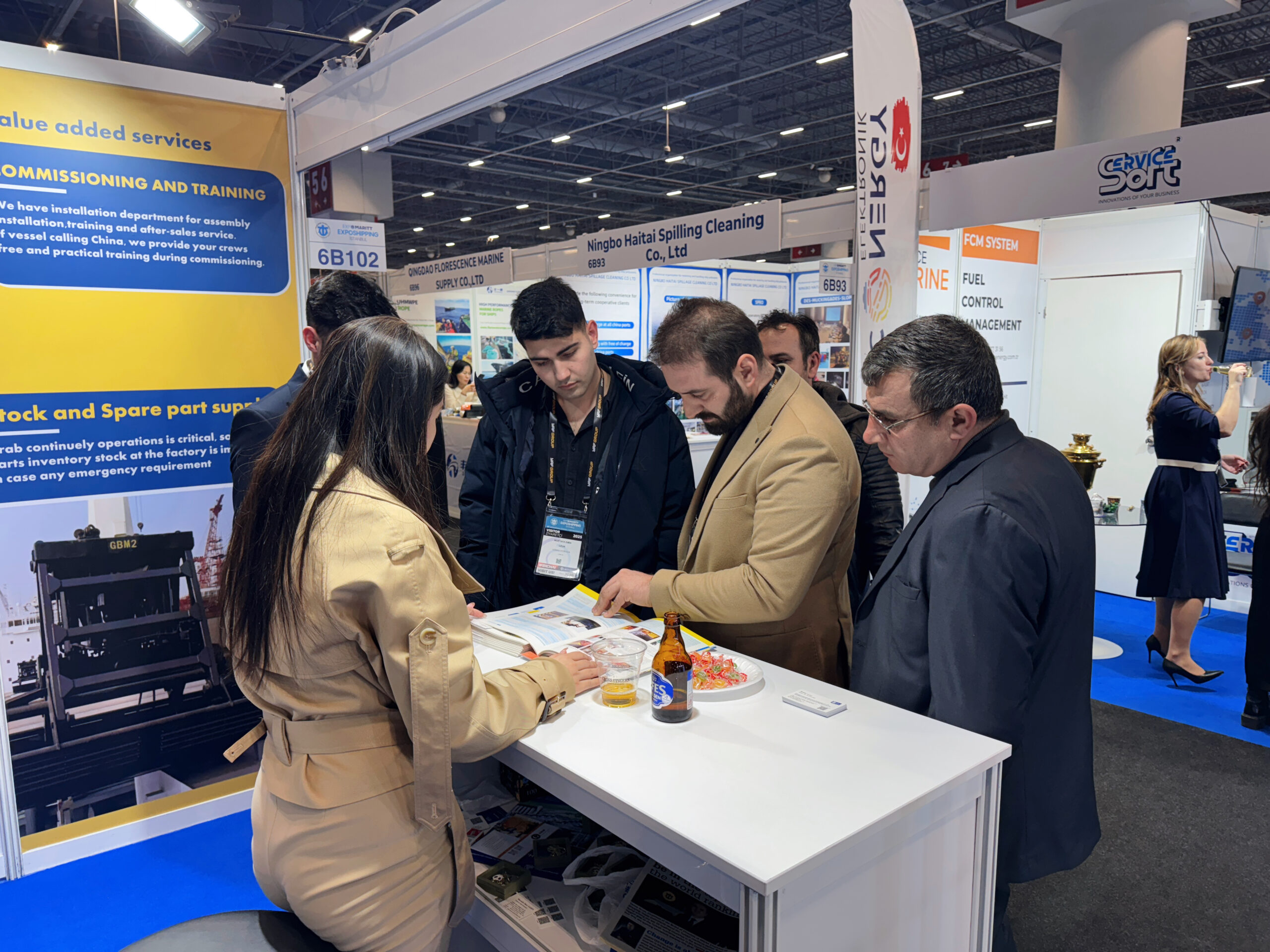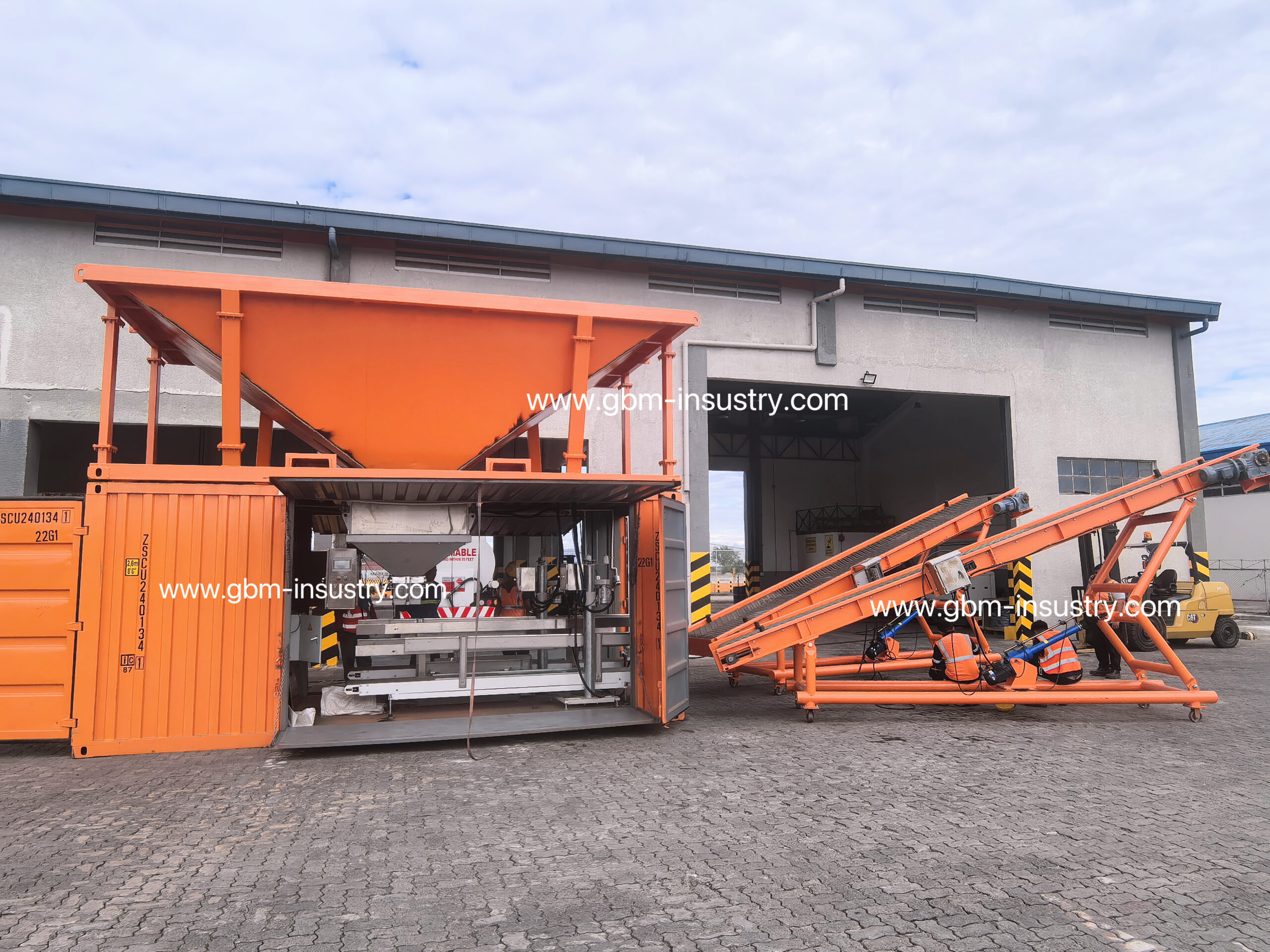With the internationalization of logistics containerization, container lifting machinery has been widely used, and the functions of container cranes have been continuously improved. As an important part of container cranes, spreaders have also undergone considerable development in recent years.
Spreaders can be divided into two categories according to their transmission mode: hydraulic and electric. Hydraulic transmission is the traditional mode of spreaders. Most container spreaders use hydraulic transmission.
As a completely new type of spreader, the use of fully electric spreaders in container terminals is also slowly increasing. After a long period of use, it has been shown that fully electric spreaders have obvious advantages in terms of energy saving and failure rate.

Working Principles of Hydraulic Spreaders And Electric Spreaders
Working Principle of Hydraulic Spreaders
The driver’s cab is connected to the spreader via a spreader cable to enable the transmission of command signals and feedback signals. All mechanisms on the spreader are driven by a hydraulic system. The spreader is equipped with a hydraulic oil pump, various control and protection hydraulic valves, telescopic oil motors, and rotary lock oil cylinders. After receiving commands from the driver, the spreader drives the various mechanisms to extend, retract, open, and lock through the connection or disconnection of solenoid valves. After the action is completed, a feedback signal is sent through the limit switch and returned to the driver’s cab via the spreader cable for the driver to confirm.
Working principle of electric spreader
The electric spreader abandons the traditional hydraulic transmission method used in spreaders and instead uses an electric motor as the power source for mechanical transmission. The driver’s cab is connected to the spreader via a spreader cable to enable the transmission of command signals and feedback signals. All mechanisms on the spreader are driven by electric motors. The spreader is equipped with two motors, two reduction gearboxes, and two electric push rods. After receiving the command from the driver, the spreader drives the motors or electric push rods of each mechanism through the connection or disconnection of the relay, and then drives the chain or connecting rod with the motor or electric push rod to enable the spreader to extend, retract, and lock. After the action is in place, a feedback signal is sent through the limit switch and returned to the driver’s cab via the spreader cable for the driver to confirm. The two motors and two reduction gearboxes control the lateral movement and extension of the spreader, respectively, while the two electric push rods control the opening and closing of the spreader.
Table 1 compares the working conditions of electric spreaders and hydraulic spreaders.
| Spreader type | Working condition comparison |
| Electric spreader | The oil pump motor is normally open during each work shift, and the various oil cylinders are switched to complete the lifting. |
| Hydraulic spreader | 1. The number of 20-foot to 40-foot conversions depends on the lifting conditions, with a working time of ≤22 seconds. 2. The opening and closing lock working time is <4 seconds per container. |
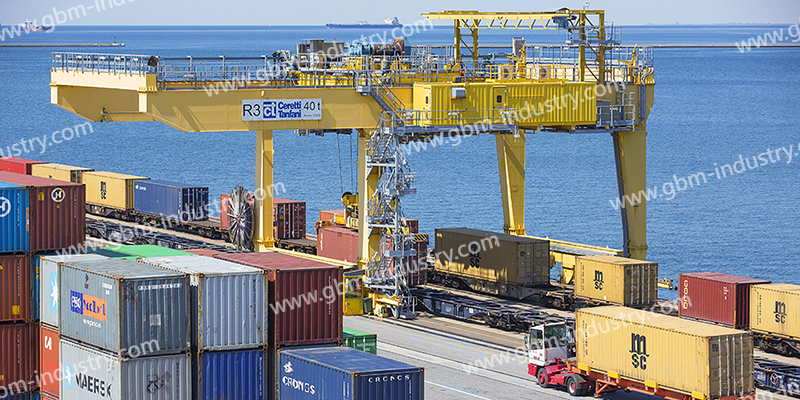
Comparison of Energy Consumption Between Hydraulic Spreaders And Electric Spreaders
Energy consumption of hydraulic spreaders
The power source of traditional hydraulic spreaders is the drive motor of the hydraulic pump. When the spreader is working, the spreader pump motor runs continuously. Therefore, the energy consumption of traditional hydraulic spreaders is mainly the electrical energy required for the spreader pump motor to operate. Traditional hydraulic spreaders use a 7.5kW three-phase asynchronous motor as the drive motor for the hydraulic pump. Based on one spreader working 10 hours a day, the motor consumes 75kW of electricity. The annual power consumption of a single spreader is approximately 27,375kW.
Energy consumption of electric spreaders
Electric spreaders do not have a hydraulic system and do not require a hydraulic pump motor as a power source.
The movements of each mechanism are performed by the motor equipped with each mechanism. Therefore, the motor only consumes energy when each mechanism is working, and the entire spreader is in a stopped state during work breaks, without consuming energy. Electric spreaders use 4 kW three-phase asynchronous motors as the power source for the telescopic mechanism and 0.5 kW electric push rods as the power source for the opening and closing mechanism. The telescoping time from 20 ft to 40 ft is about 20%. Each time the spreader extends or retracts, it consumes about 0.03 kW of electricity. The time required to open or close the mechanism is about 3 seconds, and each opening or closing consumes about 0.0008 kW of electricity.
According to statistics, tire spreaders load and unload an average of 10,000 containers per month, consuming approximately 130 kW of electricity. The annual power consumption of a single spreader is approximately 1,560 kW. From the above statistical analysis, the power consumption of fully electric spreaders is approximately 6% that of traditional hydraulic spreaders, greatly saving energy consumption.

Comparison of maintenance costs between hydraulic spreaders and electric spreaders
Hydraulic spreaders
Hydraulic spreaders use a hydraulic system for transmission, and the maintenance cost of the hydraulic system is relatively high. First, anti-wear hydraulic oil needs to be replaced regularly. Hydraulic spreaders are equipped with a 140L oil tank, and each replacement requires 120kg of anti-wear hydraulic oil, which costs about 19 yuan per kg. Each hydraulic spreader requires 2,280 yuan for each replacement of anti-wear hydraulic oil. Secondly, the opening and closing lock oil pipe is placed in the tank chain and moves with the telescopic arm when the spreader performs telescopic movements. Therefore, the opening and closing lock oil pipe is prone to wear and tear and needs to be replaced from time to time. Replacing an oil pipe costs about 600 yuan. Due to frequent operation, the opening and closing lock oil cylinder is prone to oil leakage and cylinder core breakage, and also needs to be replaced from time to time. Replacing a set of opening and closing cylinders costs about 300 yuan.
Electric spreader
The electric spreader uses a motor to drive the mechanical rotation, and the entire spreader does not have a hydraulic system, so it does not need components such as oil tanks, solenoid valves, and oil pipes. The motors equipped with each action mechanism are equipped with overcurrent protection devices, which can automatically cut off the circuit when the motor is blocked, thus avoiding damage to the motor. The most vulnerable part of the electric spreader is the copper sleeve inside the electric push rod of the opening and closing lock. The cause of damage is frequent operation, which causes wear on the copper sleeve, requiring irregular replacement. In addition, the stopping mechanism of the electric push rod of the opening and closing lock is prone to deviation and requires regular adjustment. In terms of maintenance costs, the maintenance costs of electric spreaders are lower than those of hydraulic spreaders, as shown in Table 2.
Table 2 Comparison of maintenance costs between electric spreaders and hydraulic spreaders
| Spreader type | Maintenance cost description |
| Hydraulic spreader | 1. Regular replacement of hydraulic oil, lock buttons, and lubrication. Irregular replacement of hydraulic valve parts, chains, oil pipes, limit switches, etc. 2. Large amounts of waste oil must be sent for special treatment. |
| Electric spreader | 1. Regular replacement of lock buttons and regular lubrication. Irregular replacement of chains, limit switches, relays, etc. 2. The screw nut of the rotary lock electric push rod (locking and unlocking) is replaced after lifting 300,000 containers. |
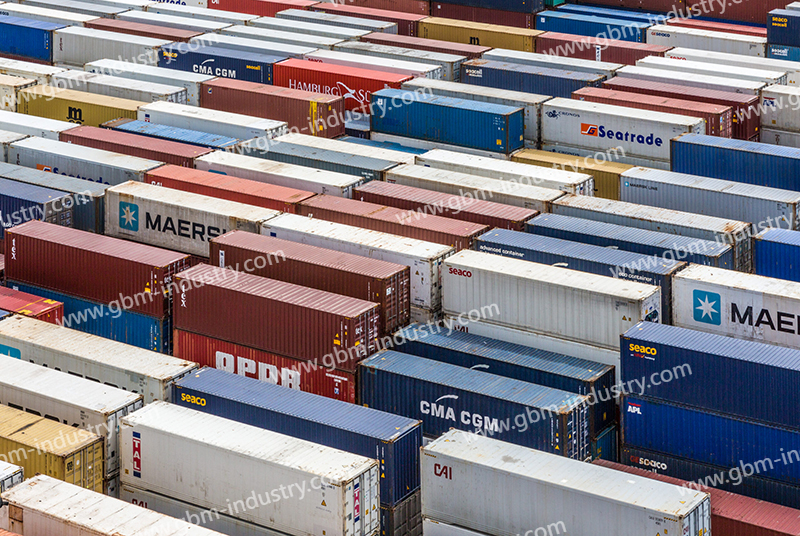
Comparison of Hydraulic Spreaders And Electric Spreaders In Terms of Faults
Faults of hydraulic spreaders
Hydraulic spreaders use a hydraulic system for transmission. There are many hydraulic pipes inside the spreader, and after long-term use, it is easy to cause hydraulic circuit oil leakage faults. For example: oil leakage from the open/close lock oil pipe, oil leakage from the telescopic oil pipe, oil leakage from the telescopic oil motor, oil leakage from the open/close lock oil cylinder, etc. The opening and closing lock cylinder is directly connected to the lock button rotation mechanism. During use, the opening and closing lock cylinder is subject to significant impact, causing the opening and closing lock cylinder to break. Hydraulic valve failure is also a common failure of hydraulic spreaders, mainly due to small impurities mixed in the hydraulic oil, which clog the hydraulic valves. In addition, limit offset, failure, and wire damage can also cause a certain amount of failure.
Electric spreader failure
Electric spreaders use motors to drive the rotation of the machinery and do not have a hydraulic system, so there are no faults such as oil leakage, oil cylinder breakage, and hydraulic valve blockage. Faults in electric spreaders are mainly concentrated in limit offset, failure, contactor damage, and deviation of the electric push rod stop position. Compared with hydraulic spreaders, electric spreaders have a simple structure, few fault points, a low failure rate, and stable use. See Table 3 for a comparison of faults.
Table 3 Comparison of failure analysis between electric spreaders and hydraulic spreaders
| Spreader type | Failure description | Number of failures/1000 natural containers |
| Hydraulic spreader | Hydraulic pipe oil leakage, opening and closing lock cylinder breakage, hydraulic valve blockage, solenoid valve coil burnout, limit switch displacement and damage, wire damage, etc. | 0.08 |
| Electric spreader | Limit switch displacement and damage, wire damage, contactor damage, deviation of electric push rod stop position, etc. | 0.04 |
Comparison of hydraulic spreaders and electric spreaders in terms of performance
Hydraulic spreaders use a hydraulic transmission system, which is easily affected by changes in ambient temperature, resulting in slow response. Electric spreaders use mechanical transmission, which is not significantly affected by changes in ambient temperature and has a wide temperature range. Hydraulic systems require a high level of skill for fault diagnosis and troubleshooting. Electric spreaders do not require a high level of skill for fault diagnosis and troubleshooting, and can be operated with a basic understanding of conventional mechanical skills. See Table 4 for a comparison of performance.
Table 4 Comparison of performance between hydraulic spreaders and electric spreaders
| Hydraulic spreaders | Electric spreaders |
| Air mixed into the system can cause crawling, noise, and vibration. | No noise during operation. |
| Sensitive to temperature changes; sluggish response in low-temperature environments | Minimal impact from environmental temperature changes. |
| Fault diagnosis and troubleshooting skills require a high level of expertise. | Fault diagnosis and troubleshooting skills do not require a high level of expertise; basic mechanical skills are sufficient for operation. |
| Due to leakage and significant elastic deformation, the precision of constant-ratio transmission is poor. | The motor-plus-mechanical-transmission structure ensures transmission precision. |
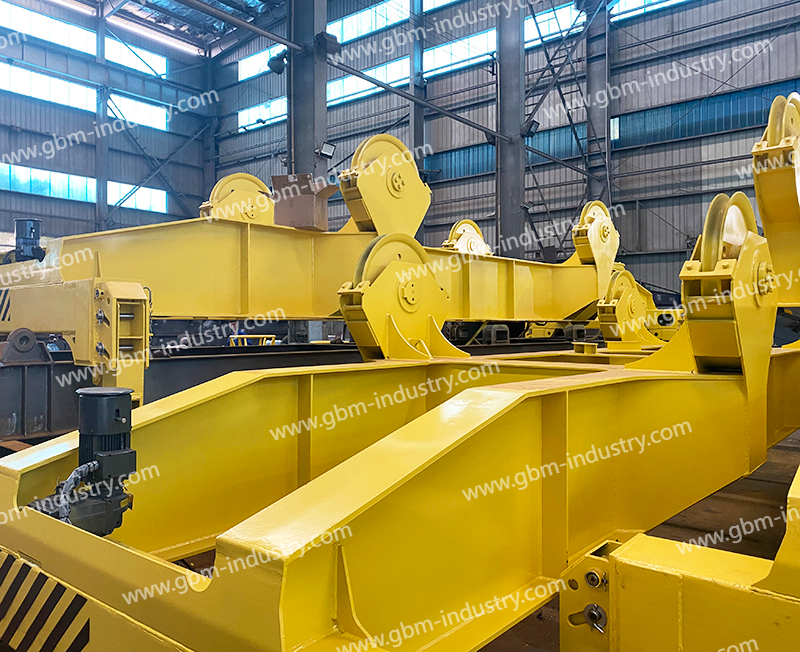
Electric spreaders: 3 core advantages Contribute to Efficient Operation
Based on the significant advantages of electric spreaders in terms of energy consumption, maintenance costs, and reliability, GBM has further optimized its product design based on technological innovation and customer needs, launching a more competitive electric container spreader solution that creates three core values for port and logistics companies:
Excellent energy efficiency, sharply reduced operating costs
GBM electric spreaders use an intelligent start-stop motor system, completely eliminating the energy consumption pain point of continuous operation of hydraulic oil pumps. The motors of each mechanism (telescopic, opening and closing locks) are only activated at the moment of operation, reducing energy consumption during operation intervals.
Minimal maintenance design, maintenance costs reduced by more than 50%
GBM electric spreaders fundamentally eliminate the high maintenance costs of hydraulic systems through a non-hydraulic design:
The telescopic chain and electric push rod are equipped with overload protection modules to avoid blockage and damage, reducing the accident failure rate.
The simplified structure reduces daily inspection time by 40% and improves spare parts replacement efficiency by 60%.
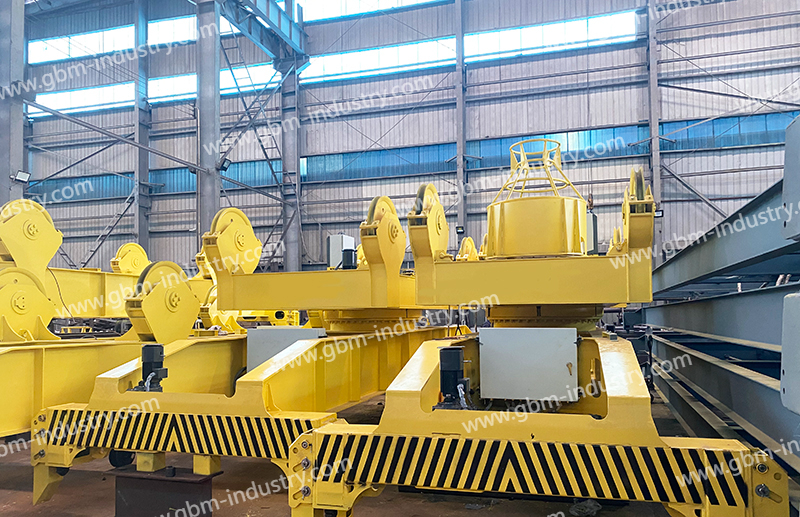
High reliability and upgraded operational efficiency
GBM ensures the efficient and stable operation of spreaders under harsh working conditions:
The conversion time between 20ft and 40ft is stable at ≤30s, and opening and closing is ≤1s, ensuring zero delays in terminal operations. The average annual downtime due to malfunctions is reduced by 80%, and the throughput efficiency of a single machine is improved by 15%.
Conclusion
Through the above comparisons and analyses, it can be seen that fully electric spreaders, as a new type of container spreader, are fully capable of replacing the original hydraulic spreaders in terms of performance and can be used in container loading and unloading machinery to perform container loading and unloading operations. In terms of usage and maintenance costs, fully electric spreaders are much lower than hydraulic spreaders, reducing usage and maintenance costs and improving economic efficiency.




